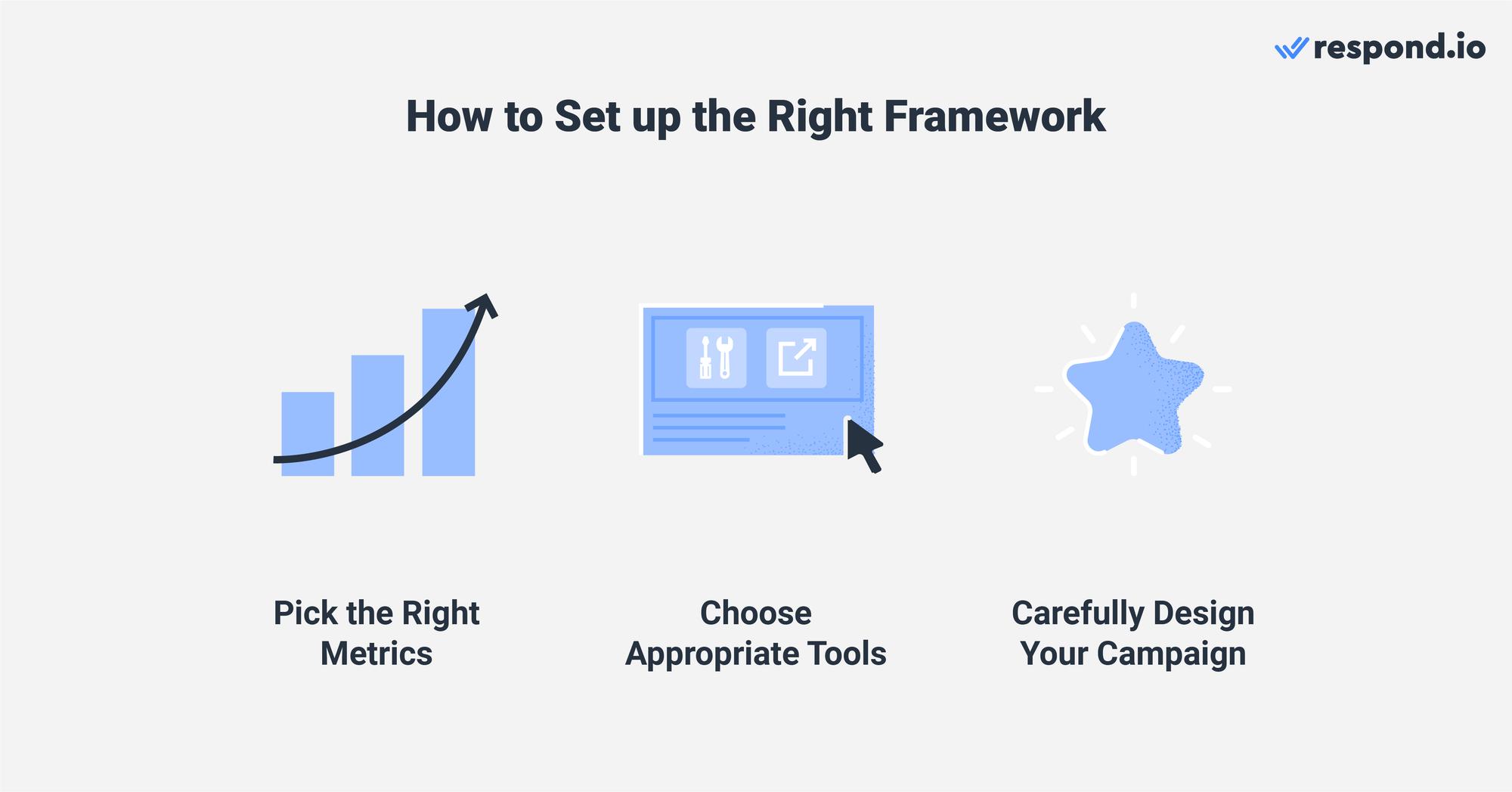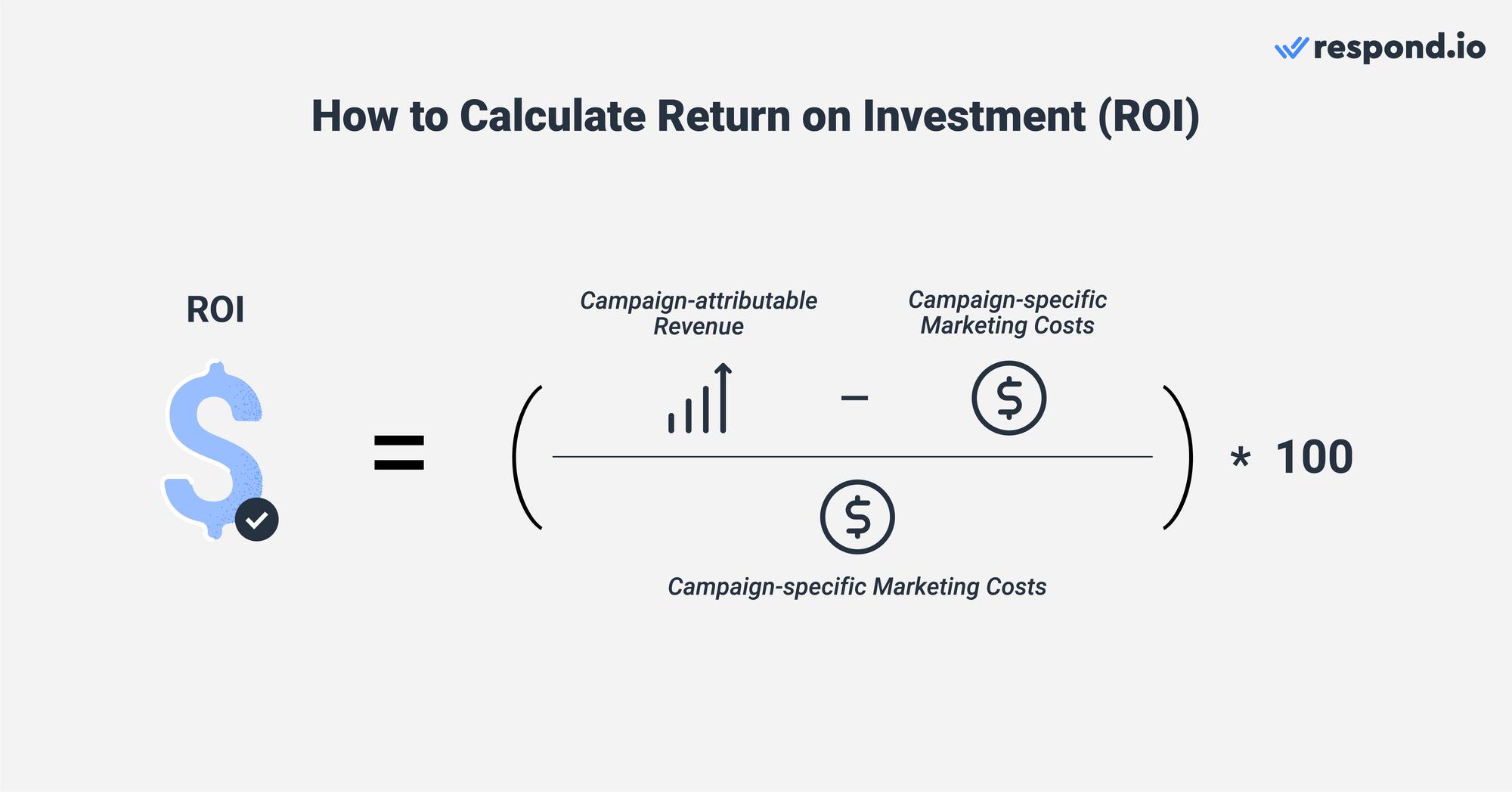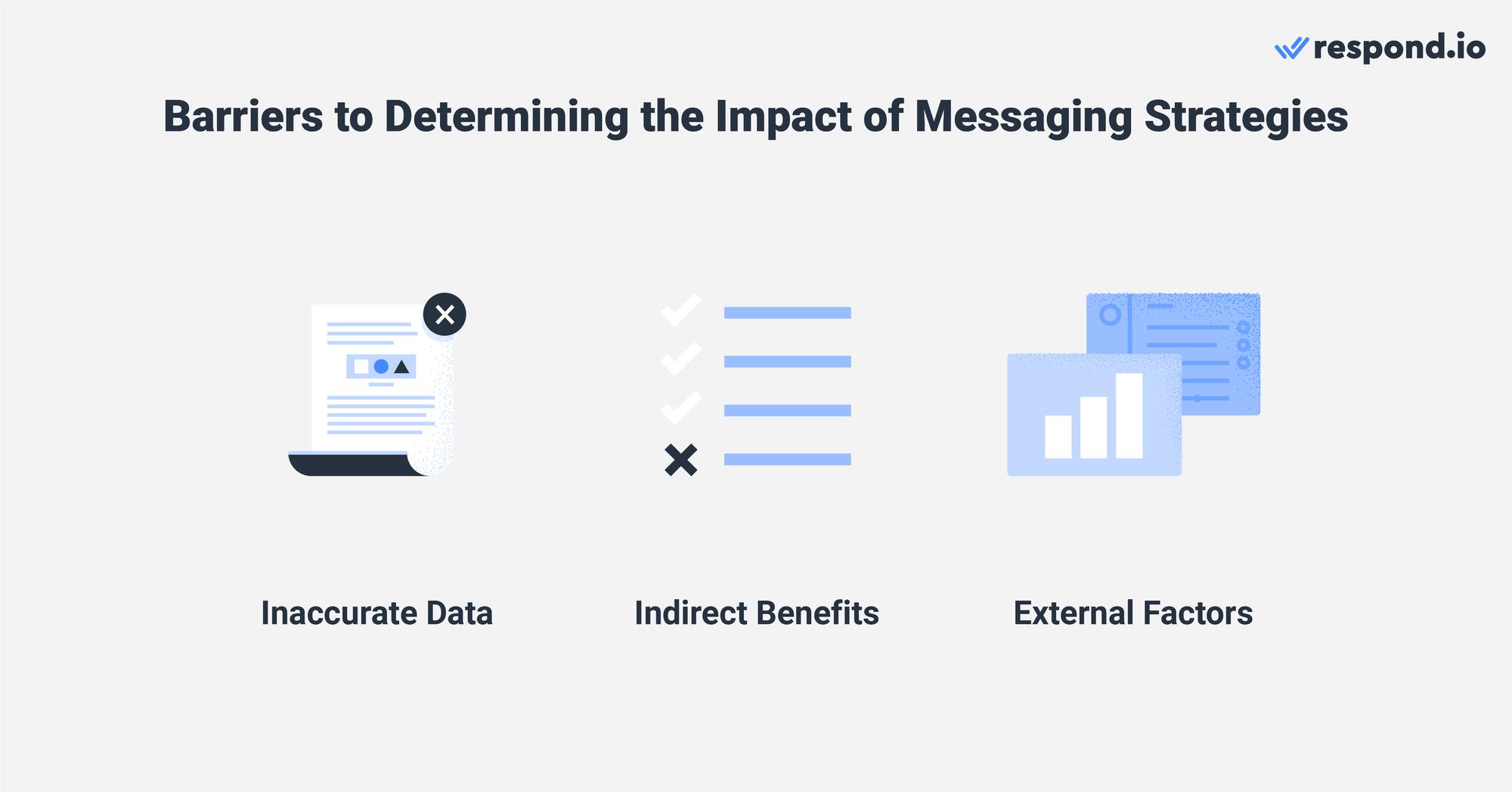
Top 5 WhatsApp Business Solution Provider + Come sceglierne uno
Un provider di soluzioni WhatsApp vi aiuterà nel vostro viaggio con l'API WhatsApp. Leggi questa guida per assicurarti di scegliere il partner WhatsApp giusto.

Messaggistica efficace può sbloccare una significativa crescita aziendale. Capire e dimostrare il ritorno sull'investimento (ROI) della tua strategia di messaggistica non è solo vantaggioso: è essenziale.
Perché? Perché si tratta di conoscere il valore reale dietro ogni messaggio inviato e ogni conversazione avuta. Tuttavia, non stiamo parlando solo di numeri. Stiamo esplorando come tradurre i tuoi sforzi di messaggistica in risultati.
ROI è più di un altro termine del settore per la gestione delle conversazioni dei clienti . È una metrica fondamentale e la base della vostra strategia.
Immaginate il ROI come scorecard, fornendo una ripartizione delle prestazioni e dell'impatto delle vostre iniziative di messaggistica. Si tratta di uno strumento essenziale in grado di misurare il successo dei vostri sforzi collegando l'efficacia delle vostre strategie di messaggistica a risultati tangibili, come l'aumento delle vendite e la migliore fidelizzazione dei clienti.
I risultati qui non sono coincidenze. Sono i risultati diretti di strategie ben realizzate.
In questo scenario, le metriche chiave servono a misurare vari aspetti, dai tassi di coinvolgimento dei clienti ai tassi di conversione, aiutando a dipingere un quadro completo che illustri come ciascun aspetto delle strategie di messaggistica contribuisca all'obiettivo generale di crescita aziendale.
Come gettare le basi per una casa robusta, è fondamentale impostare il quadro giusto per misurare il ROI della vostra strategia di messaggistica. Senza di esso, si rischia la stabilità e il successo di tutta la vostra strategia. Per fare questo, ecco come:

Per misurare il ROI delle vostre iniziative di messaggistica, è fondamentale iniziare con una solida base. Ciò significa definire chiaramente quali KPI o metriche saranno tracciate come le entrate per campagna.
Stai cercando di guidare l'impegno per campagne promozionali, aumentare le vendite, o qualcos'altro? Questi obiettivi non sono solo punti di controllo, ma fari che guidano la vostra strategia di crescita aziendale.
Una volta che le metriche sono chiare, selezionare gli strumenti e le piattaforme giuste per il monitoraggio e l'analisi diventa una scelta informata, non un colpo nel buio.
Scegli un software per la conversazione con i clienti come respond.io che ti consente di raccogliere informazioni sulle conversioni, sul coinvolgimento con le trasmissioni, Punteggi di Soddisfazione del Cliente (CSAT) e fornire report e analisi dettagliati. Mentre fa't offre direttamente la capacità di tenere traccia del ROI, le sue integrazioni con vari software, dalle API aperte a Zapier, abilita un esame completo dell’efficacia del messaggio e del suo impatto indiretto sul ROI.
Quando si progetta una strategia, iniziare a capire a fondo i vostri clienti, individuare ciò che fa appello a loro e adattare di conseguenza il vostro messaggio, anche alle piattaforme che frequentano. Segue un'attenta pianificazione, dove le campagne devono essere meticolosamente strutturate, impiegando analisi per ottenere informazioni sulle preferenze dei consumatori, con un imbuto di marketing che forma la strategia e A/B test fine-tuning ad efficacia.
Ma non dimenticate di rompere la campagna in pezzi più piccoli e gestibili. Rende tutto più gestibile e misurabile. Regolare e affinare le strategie è molto più facile quando si lavora con obiettivi più piccoli e gestibili, piuttosto che con obiettivi eccessivamente ambiziosi!
Ricorda, un quadro ROI ben definito non riguarda solo le misurazioni. È una bussola strategica che guida le tue campagne verso un maggiore allineamento con i tuoi obiettivi di business.
Trasforma le conversazioni dei clienti in crescita aziendale con respond.io. ✨
Gestisci chiamate, chat ed email in un unico posto!
Una strategia di messaggistica è il pilastro del piano di marketing e comunicazione complessivo della vostra azienda. Si tratta di comunicare chi siete e cosa fate al mondo attraverso vari canali di comunicazione.
Di conseguenza, il calcolo del ROI della vostra strategia di messaggistica è fondamentale. Si tratta di collegare i punti tra i vostri sforzi e i loro risultati tangibili.
Diamo uno sguardo a come esattamente si può mettere un prezzo su messaggi corretti:
ROI è tutto il profitto che guadagni per ogni dollaro speso. Per capire questo, dovrai iniziare identificando due cose: il tuo reddito attribuibile alla campagna e i costi di marketing specifici della campagna.
I ricavi generati attribuibili alla campagna si riferiscono al reddito che hai guadagnato grazie ai tuoi sforzi di messaggistica. Per trovare questo numero, dovrai utilizzare un mix di metodi- dalle landing page e codici di tracciamento a analisi e sondaggi dei clienti- per quantificare l'impatto finanziario della tua campagna.
D'altra parte, i costi di marketing specifici della campagna includono tutte le spese relative alla tua campagna. Questi possono variare dalle commissioni della piattaforma di messaggistica e dai costi di creazione dei contenuti (come le immagini) alle spese di distribuzione (ad esempio, se utilizzi SMS), anche se i dettagli varieranno da una campagna all'altra.
Con questi in mano, il ROI può essere calcolato con la seguente formula:

Ora, mettiamo in pratica questa formula con una campagna di messaggistica ipotetica. Immaginatevi come un business di formazione online che vende corsi di lingua. Hai appena dato avvio a una campagna di messaggistica su WhatsApp per creare attesa per il lancio di un nuovo corso.
Ecco la ripartizione delle cifre della tua campagna:
Entrate attribuibili alla campagna: Grazie alla tua campagna di messaggistica, hai iscritto 50 nuovi studenti, portando un totale di $87,000 in vendita per il tuo nuovo corso di lingua.
Costi di marketing specifici della campagna: I costi complessivi legati a questa campagna, che includono i costi di abbonamento per la piattaforma di messaggistica e la creazione di asset creativi, è di $25.750.
Con la formula ROI di cui sopra, sei pronto a calcolare i numeri e vedere il valore che la tua campagna ha apportato.
Utile sul capitale investito (ROI) = (87,000 - 25,750 / 25, 750) * 100
Il ROI che abbiamo calcolato è 237,86%. Questo indica che per ogni dollaro investito nella tua campagna, hai guadagnato $2.38 in profitto, dopo aver considerato i costi di marketing specifici della campagna.
Mentre l'esempio che abbiamo esaminato è relativamente semplice, in realtà le cose sono raramente altrettanto chiare. Alcune delle sfide più comuni che complicano il calcolo del ROI includono:

La precisione dei vostri calcoli ROI dipende interamente dalla qualità dei vostri dati. Assicurati di controllare regolarmente i tuoi dati per l'accuratezza e la completezza e considera di investire nel software di analisi dei dati prima di pensare a misurare l'impatto della tua strategia di messaggistica.
La tua strategia di messaggistica può produrre benefici superiori a quelli rilevati nel calcolo del ROI che potrebbe non essere semplice da monitorare e quantificare (e. ., maggiore consapevolezza del marchio). Al di là del ROI,'è saggio includere metriche per monitorare il volume di ricerca del marchio e anche i punteggi di soddisfazione del cliente per tenere sotto controllo questi aspetti.
Fattori che sfuggono al vostro controllo, come le iniziative concorrenti e i cambiamenti di mercato, possono influenzare il vostro business, potenzialmente complicare l'accuratezza dei vostri calcoli ROI. Per rendere conto di questo, assicuratevi di monitorare attentamente le tendenze esterne e le attività dei concorrenti e di renderle conto come parte dei vostri calcoli.
Quando è il momento di mostrare il valore delle tue campagne ai tuoi stakeholder, è importante essere coinvolgente e informativo. Immaginate voi stessi come una guida che li conduce attraverso un viaggio narrativo.
I personaggi principali? I dati e il ROI dalle strategie di messaggistica. La trama? Dimostrando che i tuoi sforzi non si limitano a spuntare delle caselle, ma alimentano attivamente la crescita aziendale.
Il tuo pubblico, che siano CEO, azionisti o leader di team, non vuole essere bombardato da numeri. Vogliono una storia che traduca queste cifre in chiari impatti sugli obiettivi aziendali.
Qui è dove la comprensione dei vostri stakeholder entra in gioco. Ogni soggetto interessato ha interessi e preferenze uniche per ricevere informazioni. Usa strumenti come le mappe degli stakeholder o sondaggi per capire ciò che conta di più per loro. Quindi, inquadrare la presentazione dei dati intorno a questi approfondimenti per assicurarsi che risuoni con e li coinvolge.
E soprattutto, assicuratevi di scegliere le metriche giuste. Dovrebbero allinearsi con gli obiettivi strategici e le priorità degli stakeholder della vostra organizzazione. Per contribuire a questo, assicurati che siano SMART:
specifico
misurabile
realizzabile
pertinente
tempo-limite
Ora parliamo di narrazione. Qui puoi dare vita ai tuoi dati per mostrare completamente l'impatto della tua strategia di messaggistica. Per fare al meglio questo:
Struttura la tua narrazione con un chiaro inizio, medio e fine. Inizia con l'impostazione del palcoscenico inquadrando la sfida che la tua campagna stava affrontando, poi esplorare ciò che avete fatto specificamente per affrontarlo e finire forte con risultati chiari e impatto.
Cerca un feedback dagli altri prima della presentazione. Trascorrere più tempo con i tuoi dati può rendere i numeri chiari per te, ma potrebbe non essere così trasparente per gli altri. Per garantire chiarezza a tutti gli spettatori, cercare un feedback per colmare eventuali lacune di comprensione.
Utilizza le visualizzazioni dei dati dove possibile. Grafici, grafici e cruscotti aiutano a trasmettere informazioni complesse in modo accessibile, consentendo agli stakeholder di cogliere rapidamente il valore del vostro ROI.
Sei pronto a sbloccare il potenziale delle conversazioni dei tuoi clienti? Scopri come respond.io può rivoluzionare le tue strategie di messaggistica con la nostra prova gratuita!
Trasforma le conversazioni dei clienti in crescita aziendale con respond.io. ✨
Gestisci chiamate, chat ed email in un unico posto!
Hai trovato questo articolo utile? Scopri questi articoli correlati per saperne di più:
Ryan Tan, una London School of Economics (LSE) law graduate, è un Senior Content Writer at respond.io. Con la sua esperienza nel marketing tecnologico B2B e nelle Big 4, si impegna a creare contenuti che siano sia educativi che coinvolgenti per un pubblico esperto di tecnologia. Ryan si specializza nel chiarire la messaggistica aziendale, fornendo ai lettori informazioni pratiche che preparano la strada a una crescita solida.

Un provider di soluzioni WhatsApp vi aiuterà nel vostro viaggio con l'API WhatsApp. Leggi questa guida per assicurarti di scegliere il partner WhatsApp giusto.